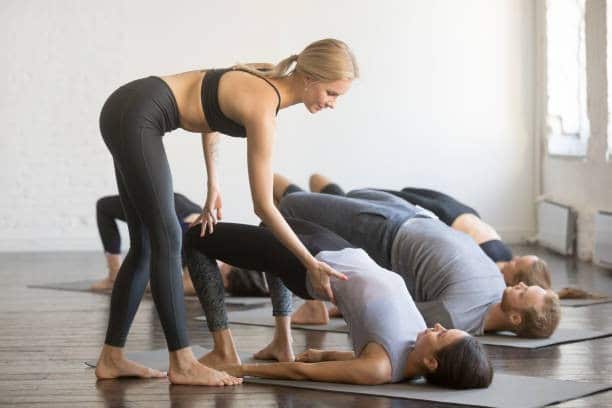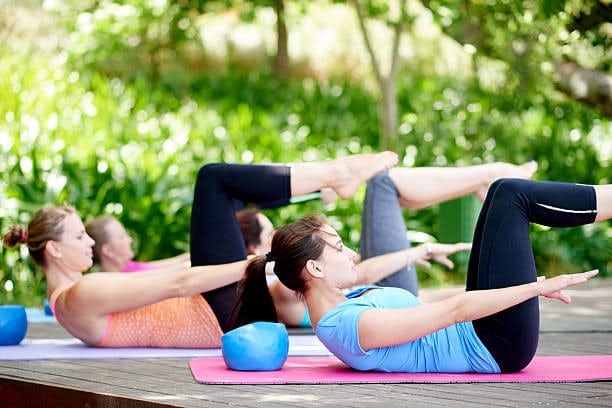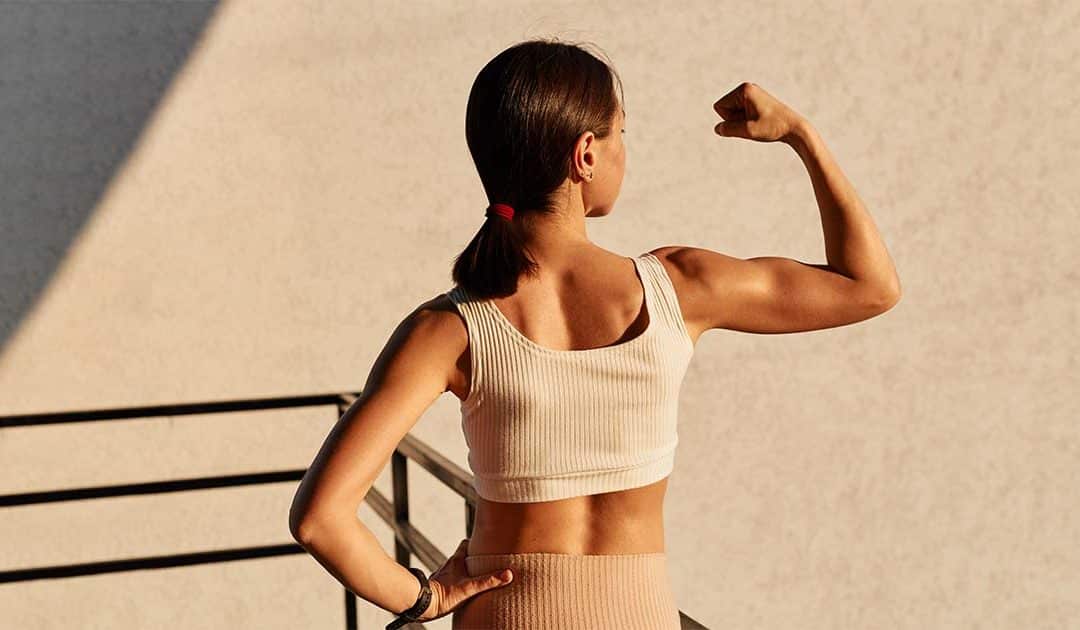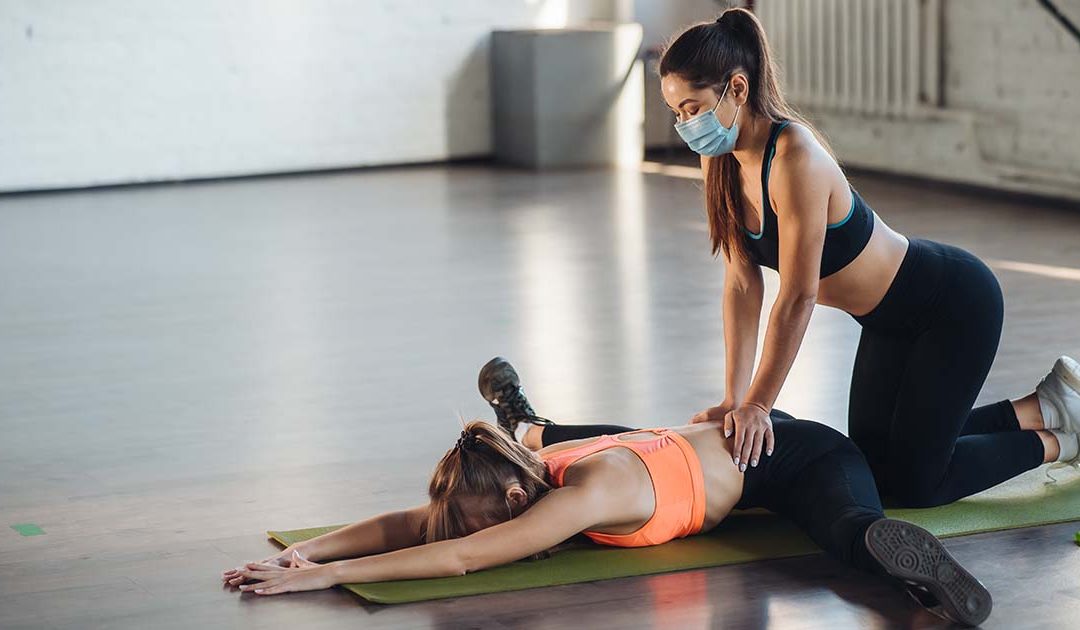Whether you’re seeking a stronger core, flatter stomach, better balance, reduced body fat or a calmer mind, Pilates can answer your needs. Learn how Pilates benefits your body in 8 ways with PilatesPop-Up.com
Workout motivation fizzling? Here’s how to reboot your resolution.
What is Pilates?
Created by Joseph Pilates, has been around since the late 1800s. It came to the United States from Germany in the late 1920s, according to the Pilates Method Alliance.
You might associate Pilates with core work and moving at a controlled pace either on a mat or a machine. But at its foundation, Pilates is all about moving your entire body as one unit, with the core at the center of every movement.
“Pilates is based on the idea that we should be working all the muscles of the body together, in the way that they should be functionally engaging for really healthy alignment and really healthy human movement,” says Joyce Schaer, a certified Pilates instructor and founder of Pilates Pop-Up.
And it leads to some really big payoffs: “A graceful, lean, flexible and functional body that moves well will look the best, be the strongest, and be least prone to injury,” she says. “And if you work on coordination, joint function, postures, and alignment predominantly, you’ll see aesthetics of the body change accordingly.”
Popularity of Pilates
Celebrities love it. Some physical therapists incorporate it into their rehab sessions. Serious athletes do it too. Pilates has become a go-to workout for those looking to move better, look good, feel amazing and improve self-confidence.
In the past few years, so many people have become fans of the Pilates exercise regimen that the market research company Allied Market Research estimates the Pilates market will grow by nearly 12 percent annually into 2025.
While Pilates often gets lumped in with yoga—which also brings a mental focus to a physical practice—the practice has its own set of principles and benefits. Pilates is more strenuous than Yoga and therefore provides more strength and body fat reduction. So, what is Pilates anyway? This guide breaks down what you’ll do in a Pilates session and all the benefits you can gain from doing it regularly.
How Pilates Benefits Your Body?
A Pilates practice can work for nearly everyone, from older adults looking for a daily movement regimen to teenage dancers supplementing their cardio workouts to gain strength, says Joyce Schaer, founder of Pilates Pop-Up.
The practice is also great for rehabbing injuries. Take an ankle sprain for example. If you can’t put your full weight on your lower half, you can use the reformer—a machine with springs that lowers the impact of movements, even jumping—to take some of the pressure off.
Pilates combines strength and stability while promoting a mind-body connection. It’s a whole-body approach that stands out from other forms of training, bringing lots of benefits for your physical (and mental) health. Here are the ways that Pilates benefits your body and mind:
1. Excellent core strength
“There are a lot of training methods that think core work is crunches,” says Schaer. “But that’s only working the muscles that pull us into flexion. That’s not how we want to function.” Instead, you want to strengthen all the muscles around the torso and improve both core contraction and lengthening.
Joyce Schaer agrees and explains that in other forms of training in which you might do crunches, sit-ups, and twists, you’re not necessarily taught to properly contract deep core muscles. In Pilates, you are.
One way she teaches students to contract the deep core muscles is by telling them to think about zipping up a pair of low-rise pants. The ab contraction you’d feel when you zip them up is the same activation you want throughout a Pilates routine.
This deep core activation will come into play during everyday activities like lifting a baby or picking up groceries—even in other forms of movement, like resistance exercise and kettlebell training, Joyce Schaer says. Practicing deep core activation will help you prevent injury when doing these other types of movements. Try it out with these Pilates moves.
2. Better balance
With its focus on the core, it’s clear that Pilates benefits your body. It can build strength in your midsection. But it’s not just your middle that gains strength and stability from the practice.
Your entire body does as well, including your lower half. Research published in 2018 in the American Journal of Physical Medicine and Rehabilitation shows that Pilates can enhance your balance and build strength in the legs, particularly in older adults.
3. Promotes mindfulness through breathing
Pilates starts with connecting to the breath, Schaer explains.
“Our diaphragm is one of the primary core supporters and plays a role in posture,” she says. “So we make sure everyone is breathing well and letting movement follow the breath, rather than moving and breathing arbitrarily.”
This way of breathing helps you move with intention because you’re thinking about your posture and flowing from exercise to exercise, Joyce Schaer says.
Focusing on the breath brings mindfulness into your Pilates practice, allowing you to mentally remain in the present. The practice of deep breathing will follow you out of the Pilates studio and into daily life, Schaer says. This can bring a sense of calm to each day and help you be more present in each moment.

4. Improves your flexibility and mobility
Maintaining a full range of motion in our joints is super important for flexibility, mobility, and moving with ease—especially as we age. Pilates benefits your body and supports that mission, Schaer says.
To keep a full range of motion, your exercise regimen needs to include both flexibility and mobility training, according to the American College of Sports Medicine. What makes Pilates stand out is that you strengthen the muscles both eccentrically (lengthening) and concentrically (shortening), suggests 2015 research published in the journal Age.
“Yoga is quite static at the end range of motion,” Schaer says. That just means you’re often holding elongated postures. Pilates, on the other hand, lengthens to the point of muscle engagement and then moves back to shortening. Therefore, while you achieve the end range of motion, you also learn to move in and out of it with control.
A study published in The Journal of Strength and Conditioning Research supports the fact that Pilates improves flexibility, particularly of the hamstrings. This same study found that Pilates can also improve muscle endurance, specifically of the abs. That means you can work longer without hitting fatigue.
Other research, published in 2019 in the Journal of Exercise Rehabilitation, found that Pilates helps with functional movement—you know, the kind of movement you use in your daily life. The study even found that Pilates is more beneficial than yoga in that regard.
And research published in NeuroRehabilitation suggests that Pilates can help those with multiple sclerosis gain balance, muscle strength, and mobility.
5. Keeps you engaged
With countless variations on Pilates exercises, you’ll rarely repeat the same moves. Pilates involves exercising on all planes of motion and in various positions and directions, Schaer says. Maybe you do an extension and then rotation. Or maybe you start on your side and then move to your back.
“The original series from [Joseph Pilates] has hundreds of exercises, but when you create variations, there’s an infinite number of options, which is why it’s so effective,” Schaer says. “You’re constantly changing and not moving linearly.”

6. Helps with your posture
Feeling the effects of sitting at a desk all day, hunched over your computer? Pilates can help with that. Many of the exercises are done on your back, which helps promote a neutral spine and pelvis, Joyce Schaer says.
“Lying down on the reformer, you can’t sit with shoulders forward and head forward,” she explains. “You can’t fight gravity, so your head and shoulders have to relax back.”
Schaer says your Pilates teacher should offer tips on alignment throughout the class. That’ll help you learn where your body is, where it should be, and how to move to achieve ideal alignment.
As you move with good alignment in a Pilates class, you’ll build the awareness you need to maintain good posture when you’re sitting, standing, and walking outside of the studio, Joyce Schaer says.
Schaer agrees, saying Pilates helps you regain more balance in your body, so you don’t have to consciously think about standing taller or pulling the shoulders back. It just happens. “We have to work those small, intrinsic muscles in the shoulders, hips, spine, and ankles, and stabilize them and bring awareness to balancing them,” she says.
7. Eases low back pain

With a stronger core often comes a reduction in low back pain, says Joyce Schaer. Pilates tends to help with both.
While more research is needed to support the idea that Pilates reduces back pain, some studies suggest that it can have a positive effect. For instance, a systematic review published in the Journal of Physical Therapy Science found that Pilates provides pain relief.
8. Great for cross-training
Whether you’re a runner, swimmer, biker, or CrossFit lover, Pilates can round out your training. It offers a soothing alternative to more intense workouts, helping you get stronger from your limbs to your core.
“I don’t think anyone should do just one type of exercise,” Joyce Schaer says. “And Pilates is good cross-training for athletes or anyone active who’s looking to change their movement patterns and better their brain and body.”
(Learn more about doing Pilates for weight loss.)
Where can you do Pilates?
Joyce Schaer says it’s a good idea to start Pilates with a group lesson outdoors to enjoy the beautiful surroundings and fresh air. The group provides benefits that are motivational and encourages adopting the comradery of the Pilates movement and friendships. Private lessons at the Pilates Pop-Up studio with a reformer or a wunda chair are also available so students receive a custom-designed personal Pilates workout by a private instructor. Alternatively, you can also find more budget-friendly group class options at PilatesPop-Up. Become a member and enjoy the Pilates lifestyle where fitness and mental health add self-confidence to your life.
Let us know if you have any questions. Join our class or call Joyce at 214-616-7989. Follow us on Instagram.



